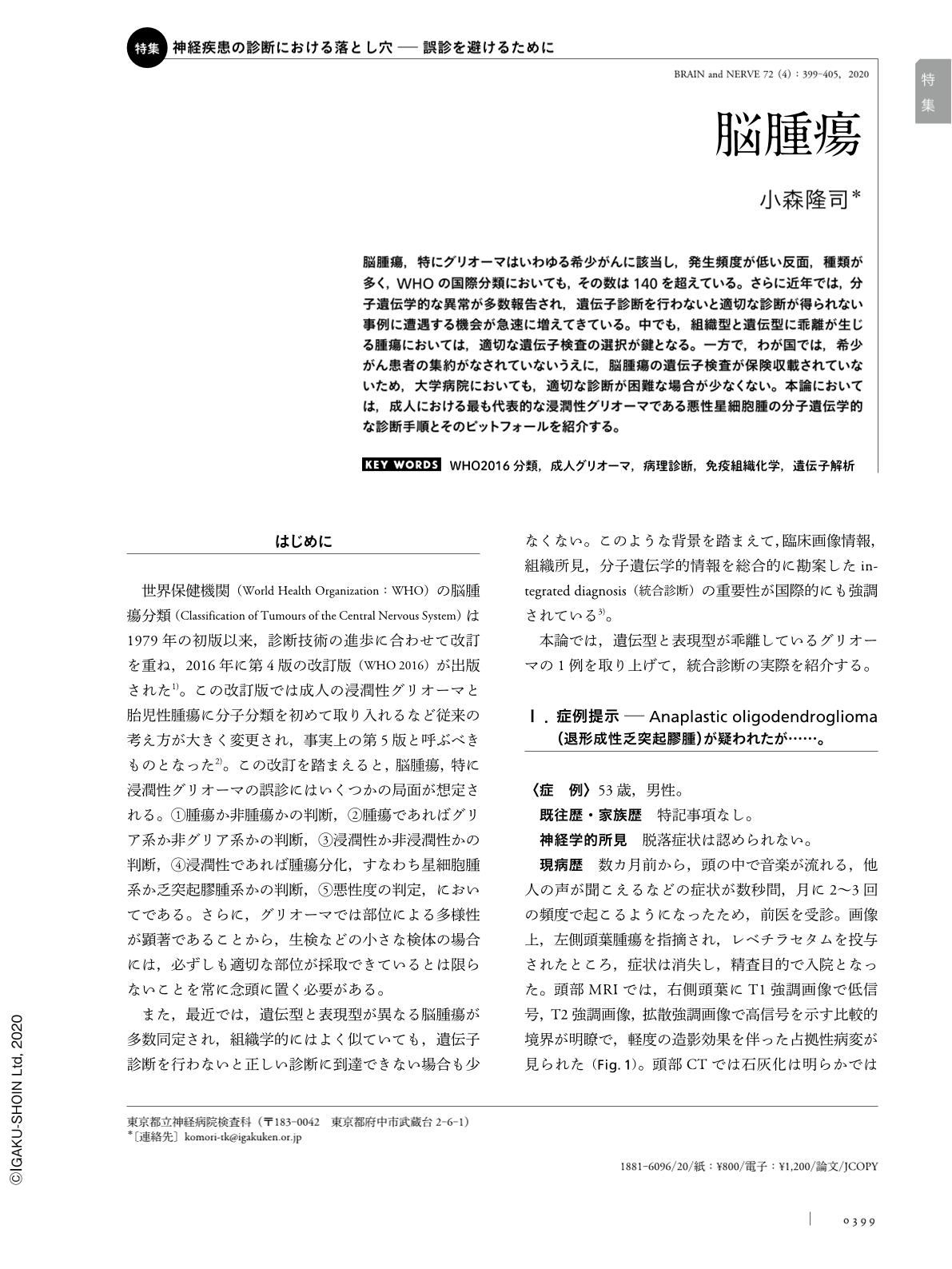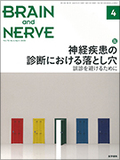Japanese
English
- 有料閲覧
- Abstract 文献概要
- 1ページ目 Look Inside
- 参考文献 Reference
脳腫瘍,特にグリオーマはいわゆる希少がんに該当し,発生頻度が低い反面,種類が多く,WHOの国際分類においても,その数は140を超えている。さらに近年では,分子遺伝学的な異常が多数報告され,遺伝子診断を行わないと適切な診断が得られない事例に遭遇する機会が急速に増えてきている。中でも,組織型と遺伝型に乖離が生じる腫瘍においては,適切な遺伝子検査の選択が鍵となる。一方で,わが国では,希少がん患者の集約がなされていないうえに,脳腫瘍の遺伝子検査が保険収載されていないため,大学病院においても,適切な診断が困難な場合が少なくない。本論においては,成人における最も代表的な浸潤性グリオーマである悪性星細胞腫の分子遺伝学的な診断手順とそのピットフォールを紹介する。
Abstract
The World Health Organization's (WHO) classification of the central nervous system tumors represented the primary source of diagnosis and grading criteria for the brain tumors. The revision of the WHO classification in 2016 represented a shift from the traditional principle of using neuropathological diagnoses primarily based on the microscopic features, to using molecularly oriented diagnoses. New entities, defined by both the histological and molecular features, such as isocitrate dehydrogenase mutations and 1p/19q co-deletion, were included. To achieve an accurate diagnosis, the selection of suitable genetic testing methods in addition to having a basic knowledge of neuro-oncology and neuropathology, is essential. This text primarily focuses on the differential diagnosis of diffuse small-cell glioma that aids in understanding a practical method for the diagnosis of diffuse gliomas in adults.

Copyright © 2020, Igaku-Shoin Ltd. All rights reserved.


